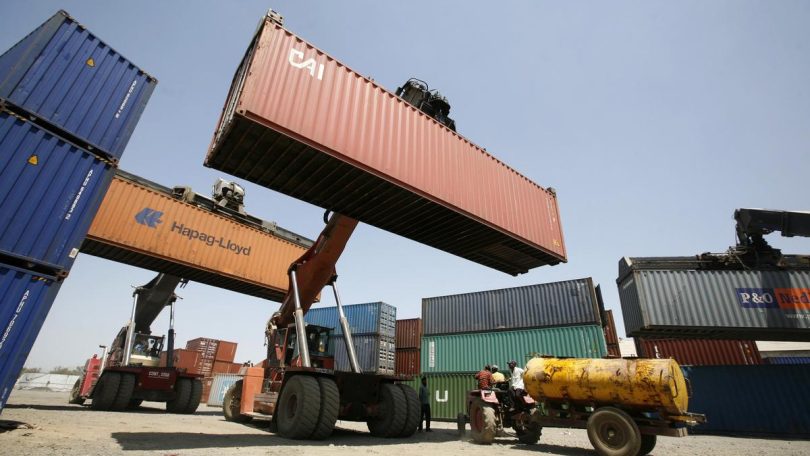[ad_1]

Trade deficit for December 2022 has been revised lower from $24.24 billion to $22.1 billion. File
| Photo Credit: Reuters
India’s merchandise exports fell for the second month in a row this January, with the value of shipments slipping 6.6% to $32.91 billion, but the trade deficit eased to the lowest in a year at just $17.75 billion, thanks to a concurrent dip in imports.
The Commerce and Industry Ministry also sharply revised the goods trade numbers for December 2022, lifting the export figure by $3.6 billion to $38.07 billion, which indicates a year-on-year contraction of just 3% in that month compared to 12.2% estimated earlier. This constitutes the biggest revision in export numbers so far this year, followed by a $3.1 billion upgrade for August 2022 and $2.85 billion in November 2022.
Imports, which fell 3.6% to $50.66 billion in January, were also revised up by nearly $2 billion for December 2022, from $58.2 billion estimated earlier to $60.18 billion. The trade deficit for December was thus, revised lower from $24.24 billion to $22.1 billion.
Based on the revised numbers, the sequential deceleration in both exports and imports is quite significant through January, with outbound shipments dropping 13.6% and imports falling 15.8% from December 2022 levels.
At a cumulative level, merchandise exports have grown 8.5% to $369.25 billion in the first 10 months of 2022-23, Commerce Secretary Sunil Barthwal pointed out, expressing optimism that “this growth momentum would continue despite strong global headwinds”.
Imports, on the other hand, have grown 21.9% between April 2022 and January 2023 to hit $602.2 billion. The Ministry attributed this to the dichotomy of a slowing global economy and strong domestic growth despite external headwinds.
Two-way effect
“This seems to be having a two-way effect on India’s trade. On one hand, it is reducing exports as there is decline in global growth, resulting in sluggish export demand, while on the other hand increasing imports as domestic demand remains resilient due to relatively high growth,” it explained.
As many as 16 of India’s top 30 export commodities reported a decline, with handlooms, plastic and linoleum as well as jute products falling over 30%. Other labour-intensive sectors also reported a marked contraction in exports, including carpets (-27.4%), gems and jewellery (19.3%), man-made yarn (-21.1%), handicrafts (-8%), and readymade garments (-3.5%).
Engineering goods exports, accounting for about a quarter of India’s exports in recent years, fell nearly 10%. On the other hand, gold imports, which have a bearing on the current account deficit, declined by 70.76% to just 0.70 billion in January, the Ministry pointed out.
“The material decline in imports during January was partly driven by a collapse in gold imports, but even petroleum shipments fell sharply, mostly reflecting inventory adjustment, in our view, as it comes despite energy prices being broadly stable,” Barclays economists Rahul Bajoria and Shreya Sodhani said in a research note.
Non-oil, non-gold imports remained weak at $33.7 billion, suggesting easing commodity costs and somewhat lower demand for exports, they noted, expecting the trend to persist.
[ad_2]
Source link








